By Charles Hilbert
Fourteenth-century Japan was ruled by an emperor who traced his descent back to the sun goddess Amateratsu. However, the emperor took his orders from the retired or cloistered emperor (usually the father of the emperor), who in turn took his orders from the Sei-I Tai Shogun, who took his orders from the kampaku, or regent. This strange arrangement worked because the emperor was bound by custom and filial loyalty to obey his father, the cloistered emperor, and the cloistered emperor had no choice but to obey the shogun, who commanded the military power of the various warrior clans of the samurai. However, like the emperor and the cloistered emperor, the shogun ruled in name only, the power of the shogunate having been usurped in the early 13th century by the Hojo Regent Tokimasa, whose descendants made sure that the office of kampaku stayed in the family.
Aside from assorted assassinations and minor rebellions, this rather complicated system worked for about 100 years. Then, the accession of Emperor Go-Daigo came in 1318. Go-Daigo was 30 years old and took the job of emperor seriously. In 1321 he ended the system of cloister government and transferred all the powers of the cloistered emperor to himself. He spent the next few years conspicuously engaged in ritual while secretly plotting to destroy the Hojo.
In the spring of 1331, Go-Daigo’s plans for rebellion were revealed by a traitor. The Hojo Regent, Takatoki, was slow to act, but by June several of the conspirators had been arrested. Go-Daigo’s subsequent attempt to gather warriors to attack the Hojo headquarters in the southeastern part of Kyoto, the Rokuhara District, was in vain, and when he learned that a Hojo army had left the regent’s seat at Kamakura headed for Kyoto, he fled the capital and arrived at Mt. Kasagi, just outside Nara, on September 27. There he took refuge in the monastery at the mountain’s peak.
Within a few days, warriors and warrior monks dissatisfied with the Hojo began to arrive at Mt. Kasagi. However, no warlord of note had yet rallied to his emperor’s side. One night Go-Daigo had a dream: a great congregation of nobles was sitting under a tree; the seat facing south was empty. Somehow Go-Daigo decided to combine the characters for “tree” and “south” and came up with the word “Kusunoki.” The monks told Go-Daigo that a warrior of that name lived not far to the south in Kawachi Province. Summoned by the emperor, Kusunoki Masashige rushed to Mt. Kasagi and pledged his life to the cause. He then returned to Kawachi to prepare for war.
Meanwhile, warriors had been pouring into the Kyoto area to swell the forces of the Rokuhara samurai. On October 1, they attacked Mt. Kasagi, and for the next nine days they tried and failed to capture the mountain fortress.
On October 11, they received news that Masashige had declared for the emperor and had built a fort at Akasaka on a small hill to the northeast of Mt. Kongo in Kawachi. The news was passed on to Kamakura, and a frightened Takatoki quickly dispatched reinforcements on October 20. On the same day, on Takatoki’s orders, a relative of Go-Daigo was proclaimed Emperor Kogon in Kyoto. Each side now had its own emperor whose legitimacy would be proved by armed might.
On the night of October 28, Mt. Kasagi was overrun. Go-Daigo was captured on November 1, after stumbling around in the direction of Akasaka, and taken to Rokuhara. He was joined by 61 monks, princes, nobles, and imperial guardsmen.
The Taiheike, the chronicle of Go-Daigo’s rebellion, records the mortification of the eastern warriors who had arrived too late to take part in the battle of Mt. Kasagi. Eager to gain glory, they did not bother to stop at Kyoto but headed straight toward Akasaka. On arrival, they found a rather modest rectangular structure built of mud-plastered wood, with few towers, covering several hundred yards of level ground. It was fronted by a not very imposing ditch, surrounded by wooded hills, and bordered on the east by terraced rice paddies.
Unimpressed by Akasaka Castle, the Kamakura samurai dismounted and rushed into the ditch, each trying to be the first over the wall and into the castle. Masashige and 200 of his men suddenly appeared on the battlements bristling with bows and arrows (the samurai’s primary weapon at this time was the bow): they fired down at their opponents, inflicting heavy losses. The attackers withdrew and made camp.
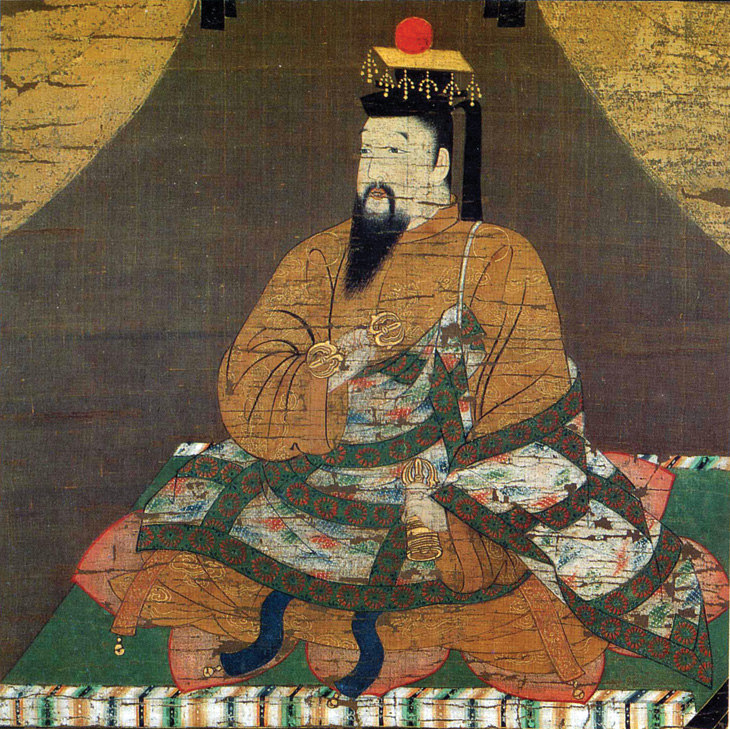
Waiting patiently in the hills above Akasaka was Masashige’s brother Shichiro with 300 mounted samurai. They rode slowly down from the hills on either side and into the mist at their feet. The Kamakura men looked at them and wondered if they were friends or enemies. Suddenly, shouting their war cries, the Kusunoki samurai charged into the camp, cutting down all within reach. While all was in confusion, Masashige and his 200 men issued from three gates in the castle wall, firing clouds of arrows at their enemies. The warriors from Kamakura fled in disorder to the Ishi River about three miles from the castle, leaving the intervening space covered with bodies, equipment, and wandering horses.
Incensed at their defeat, the Kamakura samurai raided the nearby villages, posted detachments in the hills to guard against further ambushes, and then returned to the attack. As they variously tried to pull down or climb over the walls of Masashige’s castle they were subjected to an avalanche of logs and stones and a shower of boiling water poured out of huge, long-handled ladles. Having had enough of this, the survivors, some of them badly burned, decided to let hunger do what a direct assault could not. They built barricades and towers around the castle and then waited for the defenders to run out of food. They did not have long to wait.
There was no great store of provisions in the hastily constructed castle. Twenty days after the siege had begun the food was all but gone. On the cold and windy night of November 20, 1331, while the besiegers of Akasaka huddled in their tents, a great flame suddenly shot up from within the castle. The Kamakura men stared in amazement at the conflagration. When the flames died down, they entered the castle only to find a huge pit in which lay a great pile of burned bodies. According to the Taiheike, “And then not a man of them but spoke words of praise, saying: ‘Masashige has ended his life! Though he was an enemy, his was a glorious death.’”
Go-Daigo and his fellow prisoners spent the rest of the year in captivity in Rokuhara. In January 1332, punishments were meted out. Some were beheaded; others were exiled to various faraway places on the outskirts of civilization. In April, Go-Daigo was sent to the island of Oki, northwest of the mainland and far from Kyoto. A day or two later, Kusunoki Masashige returned from the dead.
Back in November, as the besiegers of Akasaka Castle had watched it burn, Masashige and his men had crept through their lines in twos and threes. Lack of any type of uniform had allowed his samurai to mingle with their enemies undiscovered. Now, disguised as a supply train of peasants and their samurai guards, Masashige and his men entered the castle of the Hojo-appointed steward of Kawachi. As they threw off their disguises and drew their swords, more of Masashige’s men attacked the castle walls from the outside. Resistance was brief; the steward surrendered, and most of his men went over to Masashige.
A month and a half later, Masashige controlled Kawachi and neighboring Izumi Province, and by May was encamped at Tennoji temple, threatening Kyoto. A 5,000-man Rokuhara army sent to dislodge him was ambushed and destroyed by Masashige and his 2,000 warriors. In July, he withdrew before a smaller but more determined force from Rokuhara, which then occupied the Tennoji. Over the next five nights, Masashige slowly encircled the temple precincts, lighting thousands of watch fires in the surrounding hills. Each night the fires appeared closer to the Tennoji. The Rokuhara samurai lost their collective nerve and retreated to Kyoto. By the end of the month, Masashige had reoccupied the temple.
While all this was going on, samurai all over Japan began to rebel against the Hojo. Toward the end of the year, Takatoki raised a large army in Kamakura and, although he had previously ordered his warriors to capture Masashige alive, he now offered a reward for his head. Masashige withdrew to Mt. Kongo to await the arrival of the eastern armies.
The Hojo forces marched out of Kyoto on the last day of January 1333, headed for Mt. Kongo. They divided their forces, one army advancing from the northwest against Kami Akasaka, or Upper Akasaka, built farther up the mountain to replace the fortress that Masashige had burned the year before, and one from the southeast against Chihaya Castle, which he had erected during the winter near the summit of Mt. Kongo. Masashige stationed Hirano Shogen and 282 men in Kami Akasaka and took command of Chihaya himself.
Kami Akasaka was built on a spur of the mountain protected by sheer cliffs on three sides. The fourth side, sloping gently southward toward the bulk of Mt. Kongo, had been fortified with a wall and a deep, dry moat.
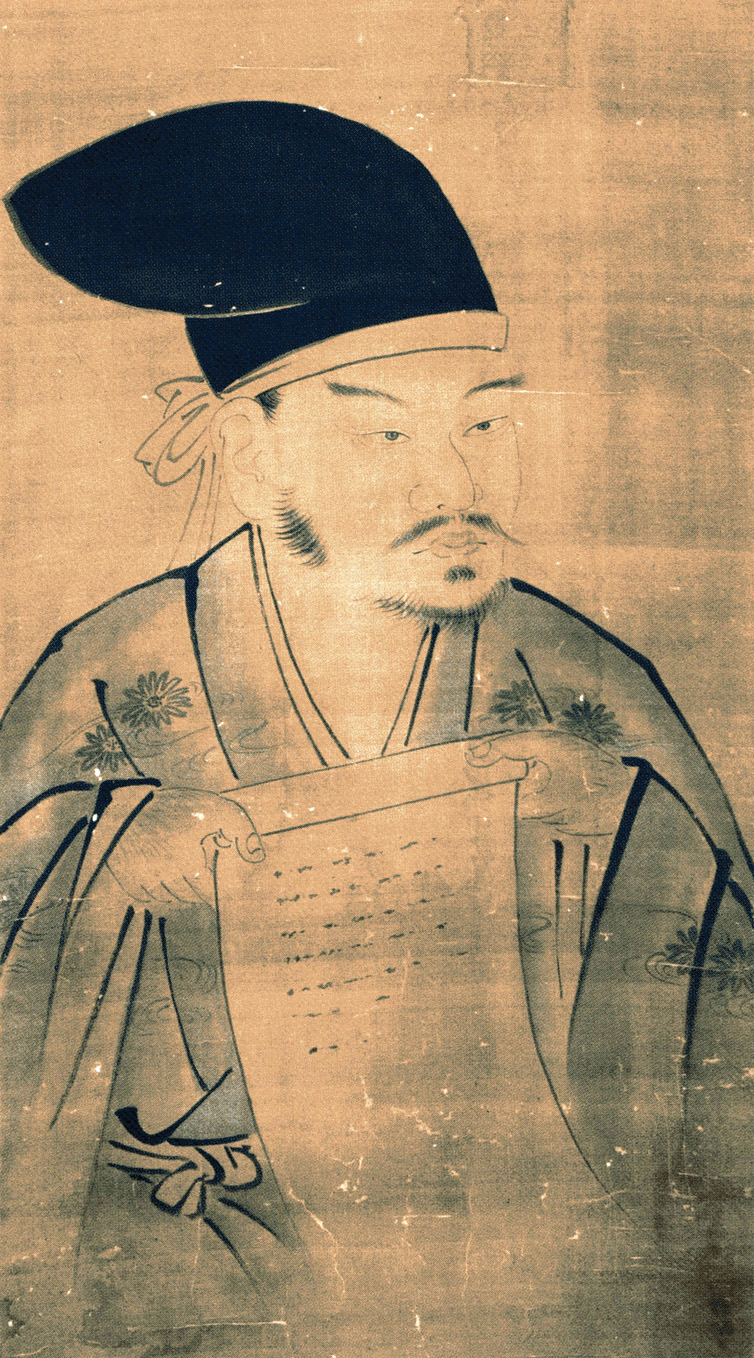
For two weeks the eastern warriors relentlessly attacked and were shot to pieces. Finally, realizing that the castle could not be taken by storm and noticing that although it had not rained during the siege the defenders seemed to have an unlimited supply of water, the Hojo samurai began to look for the source in order to cut it off. It did not take them long to figure out that a pipeline was buried beneath the saddle of land and to dig it up. Twelve days later the dehydrated defenders of Kami Akasaka surrendered on March 27, with the Rokuhara grand marshal’s promise that they would not be harmed. As they emerged they were disarmed, tied up, and then quickly led to Rokuhara where they were all beheaded. The victorious Rokuhara samurai then reinforced the besiegers of Chihaya.
Chihaya was bordered on the east and west by steep valleys and on the north and south by the rugged peaks of Mt. Kongo. However, the castle itself seemed so small and insignificant that upon arrival the Kamakura samurai had immediately advanced behind their shields. From the castle towers Masashige’s men threw down rocks, which shattered the attackers’ shields and left them vulnerable to the defenders’ arrows. Bodies tumbled down the mountainside. The attackers retreated and made camp.
The eastern warriors decided to starve the defenders into submission. Masashige had other plans. His men made dummies, dressed them in armor, and in the night set them up behind archer’s shields among the rocks and trees below the castle. Concealed behind them were 500 Kusunoki samurai. At dawn they started shouting their war cries. When the Kamakura samurai saw the dummies, they assumed Masashige had left the castle to make his last stand. The 500 men in hiding shot their arrows and then withdrew. The eastern warriors charged at the dummies. From the heights, Masashige’s men rolled down huge boulders and fired their arrows. Once again the helpless Kamakura samurai were slaughtered while the defenders of Chihaya were untouched.
Having failed to negotiate the ditch, the besiegers decided to build a bridge across one of the steep valleys where no one would suspect an attack. Five hundred carpenters were brought from Kyoto to build a bridge 15 feet wide and 90 feet long. The bridge was constructed of huge timbers. The samurai hauled it upright using as many as 3,000 ropes connected to a system of pulleys and dropped it across the valley. The attackers rushed forward, confident that this time the castle would fall.
Masashige, however, had not been idle. His men had prepared mounds of torches, and now they lit them and threw them onto the bridge. As the flaming brands piled up as the attackers rushed forward, Masashige’s men used a pump to spray the bridge with oil. The timbers burst into flames, and the attacking samurai, unable to go forward into the fire or withdraw because of those pushing from behind, were stopped dead in their tracks. As they tried desperately to escape, the bridge collapsed and the Hojo samurai fell in a shower of flaming timbers to be broken on the valley floor.
Although they vastly outnumbered the garrison of Chihaya Castle, the eastern warriors seemed unable to defeat Masashige’s few hundred samurai. Running short on food, they started to melt away in small groups, only to be waylaid by Go-Daigo’s partisans. In response, Takatoki sent more men to Chihaya; but the Hojo now had their hands full. Encouraged by Masashige’s spirited defense and because a large proportion of the Hojo’s total forces were tied up in the siege, more and more samurai all over Japan decided to support Go-Daigo.
News of these events was secretly brought to Go-Daigo in exile on Oki Island. He made a daring escape disguised as his pregnant concubine, Lady Sammi, and landed in Hoki Province the next day. The local samurai rallied to his cause and hastily fortified Mt. Funanoe. Three days later, ordered by Takatoki to reinforce Hojo forces at Kyoto, Ashikaga Takauji led 3,000 men out of Kamakura. In the meantime, other Hojo forces attacked Go-Daigo’s position on Funanoe and were beaten back with great loss. This victory brought even more adherents to the returning emperor.
Two weeks later Takauji rode into Kyoto. The following day he sent a secret message to Funanoe to offer his services to Go-Daigo. Takauji, led his army westward to join Go-Daigo’s adherents.
The Hojo moved all their remaining forces, including Emperor Kogon, into Rokuhara and worked furiously for the next 10 days to fortify the district with a wall and a moat, diverting water from the Kamo River to fill the latter. They bemoaned the absence of those troops who had been sent against Chihaya. To take a small mountain fortress, they had weakened the defense of the capital.
At the end of June, Takauji returned to Kyoto and took the city for Go-Daigo. When news of the fall of Kyoto reached the Hojo forces besieging Chihaya, they began to melt away, pursued by their enemies on all sides. What had once been a mighty army disintegrated into scattered groups of refugees fleeing through a now hostile land. Those who survived a harried flight surrendered to Takauji and joined the imperialists.
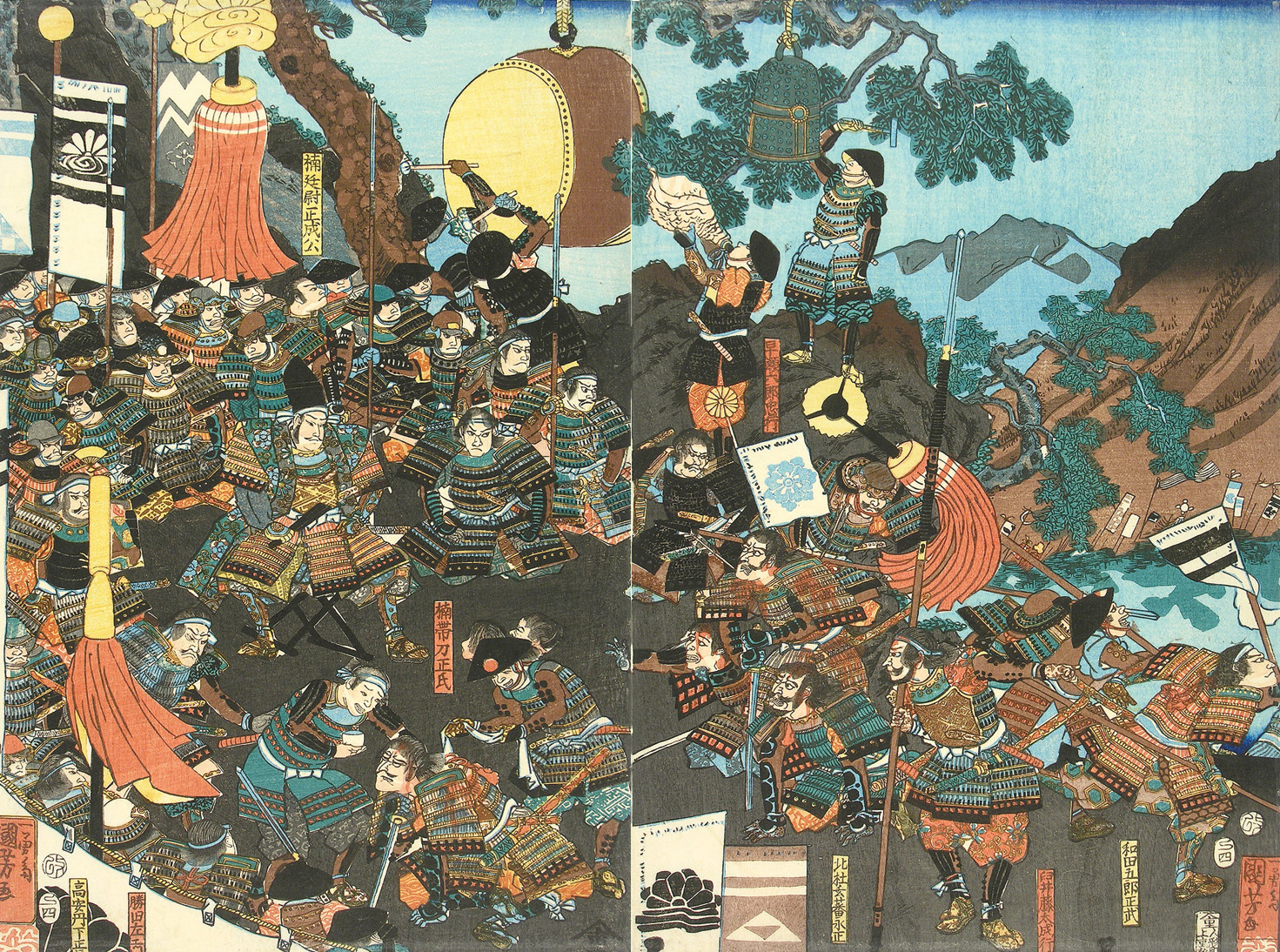
Masashige’s holding action at Chihaya had doomed the Hojo. With much of their military resources tied up in the siege, they were unable to mount an effective defense of Kyoto, and when, on July 5, 1333, Nitta Yoshisada attacked Kamakura, the Hojo lacked the manpower to defend the city. Having no other option, the last of the Hojo Regents, Takatoki, and 200 of his retainers retired to the Toshoji temple, where they cut open their stomachs and died. “Two hundred and eighty-three men of the Hojo took their lives,” according to the Taiheike. Other Hojo samurai then set fire to the temple and “some among them cut their bellies and ran into the flames, while others smote one another with their swords and fell down together in a heap,” states the Taiheike. From all over Kamakura the Hojo and their retainers gathered to the burning temple, where they slew themselves in diverse ways. The rule of the Hojo had ended.
Things looked good for Go-Daigo. He met Masashige on the road, praised him highly, and returned with him to Kyoto at the end of July. Things went downhill from there. Samurai expected to be rewarded for their services in the form of lands, manors, villages, and provinces. For various reasons not all got the rewards they expected. Their loyalty began to waver.
Go-Daigo sought to impose imperial rule; however, the samurai had felt their own strength, and they knew that they were the real power in the land. They began to look to Ashikaga Takauji rather than to the emperor. Factions coalesced. In August 1335, a son of Takatoki attacked Kamakura, where the Ashikaga now had their headquarters, and drove out Takauji’s brother Tadayoshi.
In Kyoto, Takauji asked to be appointed shogun so that he could deal with the rebellion. Go-Daigo refused, so Takauji left Kyoto on August 21, rendezvoused with his brother, and retook Kamakura on September 8. He, in turn, refused the emperor’s invitation to return to Kyoto for a victory celebration and began to act as if he were, in fact, the shogun. By November 1335, both sides were preparing for war. Takauji sent out a summons to all samurai to destroy Nitta Yoshisada; the emperor issued orders for the destruction of the Ashikaga. In the fighting that followed, Takauji took the capital in February 1336, but was driven out and forced to retreat to Kyushu, the southernmost island of Japan. By May he had subjugated the island with the help of his Kyushu allies, and on May 15 he returned to the mainland and headed east for Kyoto. He divided his forces. Tadayoshi marched along the coast, and Takauji sailed opposite him, leading a fleet of warships and transports.
Go-Daigo called for Kusunoki Masashige and Nitta Yoshisada. While Nitta advocated an immediate attack, Masashige advised a strategic withdrawal. The emperor would take refuge with the monks of Mt. Hiei while Takauji entered Kyoto, then Masashige would cut his supply lines and attack. The emperor favored Nitta’s plan.
Masashige obeyed his sovereign. He and Nitta marched for the coast. Nitta fortified the coastline between the Minato River, which, in the heat of July was really just a dry river bed, and the Ikuata River, while Masashige and his 700 retainers took up a position west of the Minatogawa between the coast and the hills, with their backs to the river, their left flank resting on Nitta’s right.
“And so, as the day broke on the twenty-fifth of the fifth month, around eight, in the rifts of haze in the offing, some boats came faintly into view … tens of thousands of naval boats … with banners erected at bow and stern, a tail wind swelling their sails,” states the Taiheike. It was July 5, 1336, three years to the day after the fall of Kamakura. The battle began when the Hosokawa samurai, adherents of Takauji, launched an amphibious assault on Nitta’s right. They were pushed back into the sea with much loss, but as they reembarked the troops of Shoni Yorishisa attacked Nitta from the west. Occupied by this new assault, Nitta was unable to prevent the Hosokawa landing farther to the east, at the mouth of the Ikutagawa. At the same time, Masashige was facing Tadayoshi, whose retainer, Shiba, was attempting to turn his right flank while Tadayoshi kept Masashige pinned in the center.
For six hours the Kusunoki samurai stood their ground, but the weight of Takauji’s reinforcements turned the tide. Coming up the east bank of the Minatogawa, they surrounded the Kusunoki samurai, who made no attempt to break out and went down fighting. In the end, Masashige and his brother, Masasue, with only 73 men remaining, fought their way to a house north of the river. Masashige was bleeding from 11 wounds, and all who were with him had also received multiple wounds. Vowing “to be reborn in the Human Realm seven times so that I may destroy the imperial enemy,” states the Taiheike. Masashige and Masasue stabbed each other to death. Their retainers set the house on fire and followed them.
Go-Daigo was forced to do what Masashige had advised: he fled the capital. Takauji installed Kogon’s son, Komyo, as emperor, and for the next 46 years Japan was divided between the northern court in Kyoto and the southern court in Yoshino, where Go-Daigo set up shop in 1337. Nitta was mortally wounded in battle in August 1338. Legend has it that, rather than let his enemies take him alive, he cut off his own head. Go-Daigo died of an illness in September 1338.
The southern court surrendered in 1392, but the damage had been done. Japan was now a land of petty principalities; the long war had stripped both the court and the shogun of their power and had allowed the rulers of provinces to become, in effect, the rulers of small, independent kingdoms. The country would not be united again until 1615 under the Tokugawa dynasty, whose shoguns ruled Japan for the next 250 years. Then U.S. Commodore Matthew Perry came with his black ships and changed everything forever. Kusunoki Masashige lives on in Japanese culture and history as the ideal samurai: fearless and resourceful in battle, selflessly serving his emperor, professing loyalty unto death.
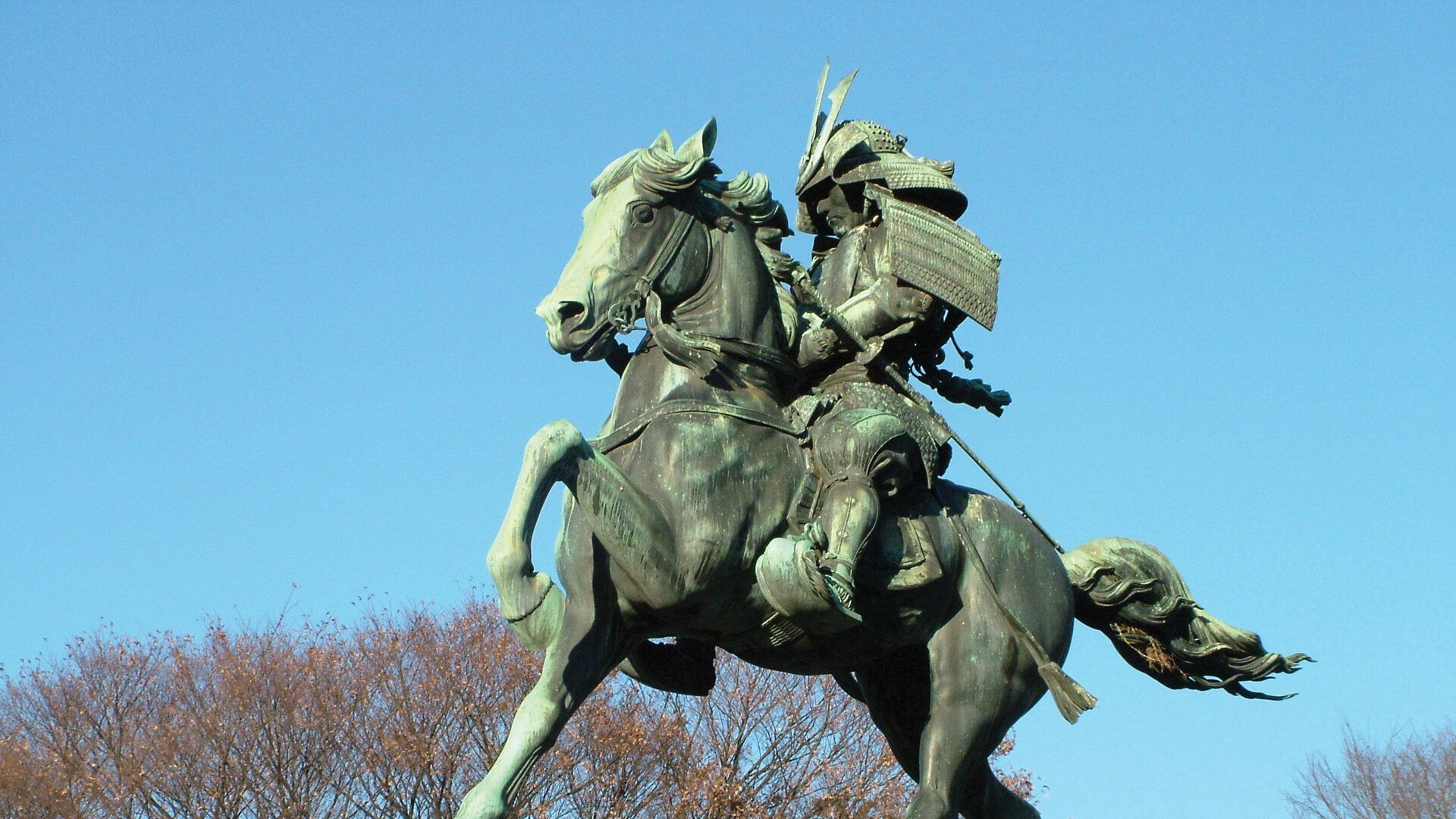
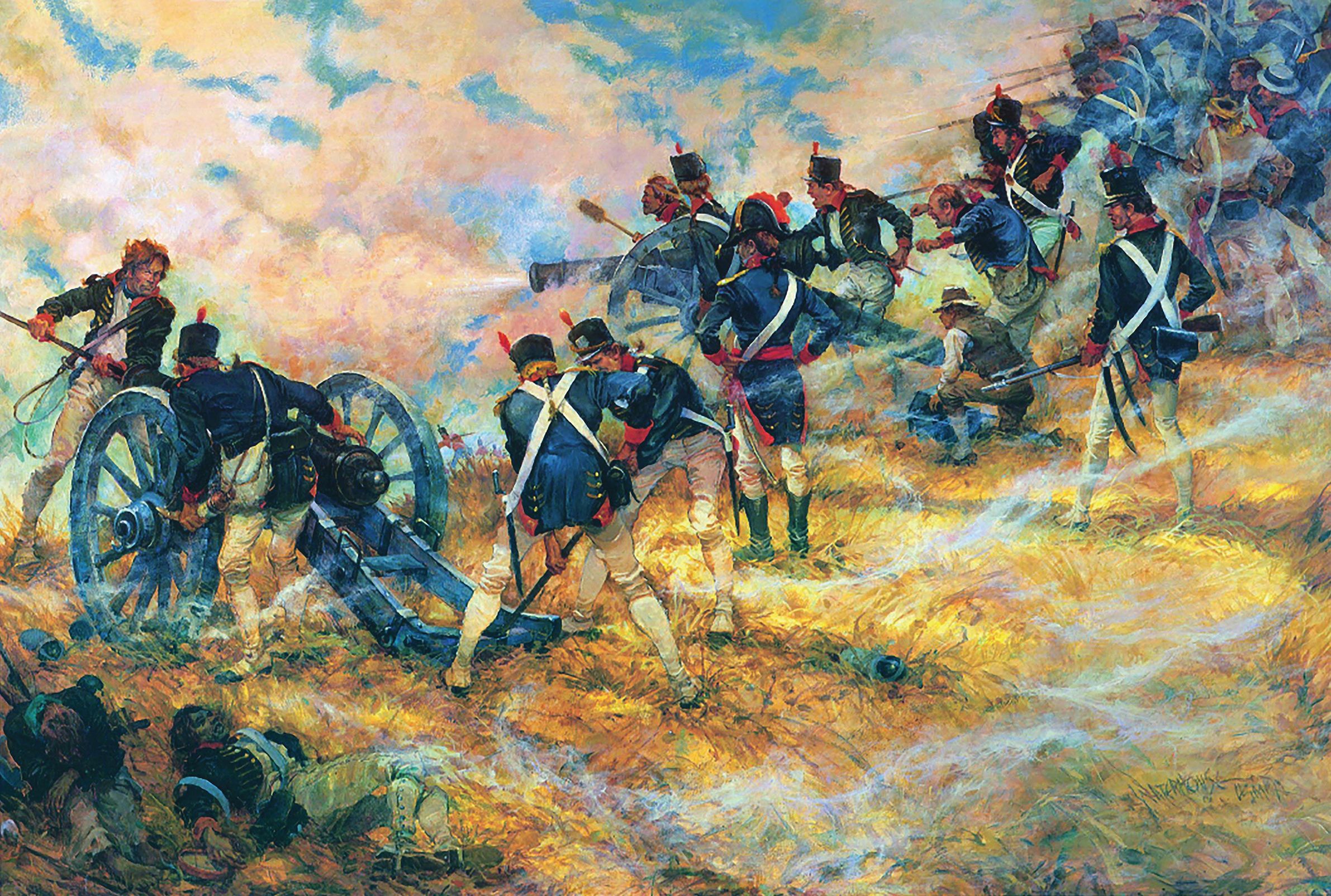
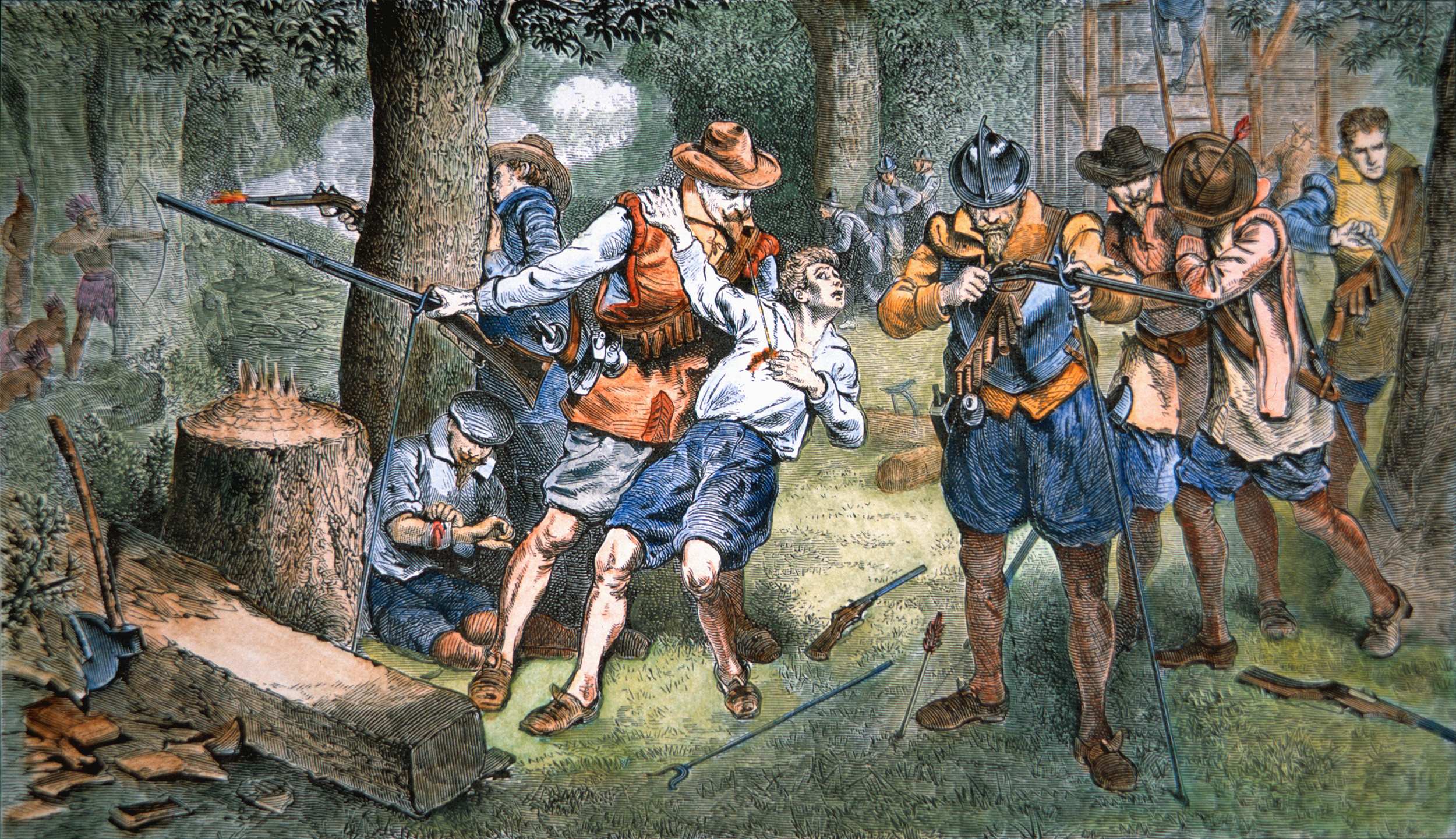

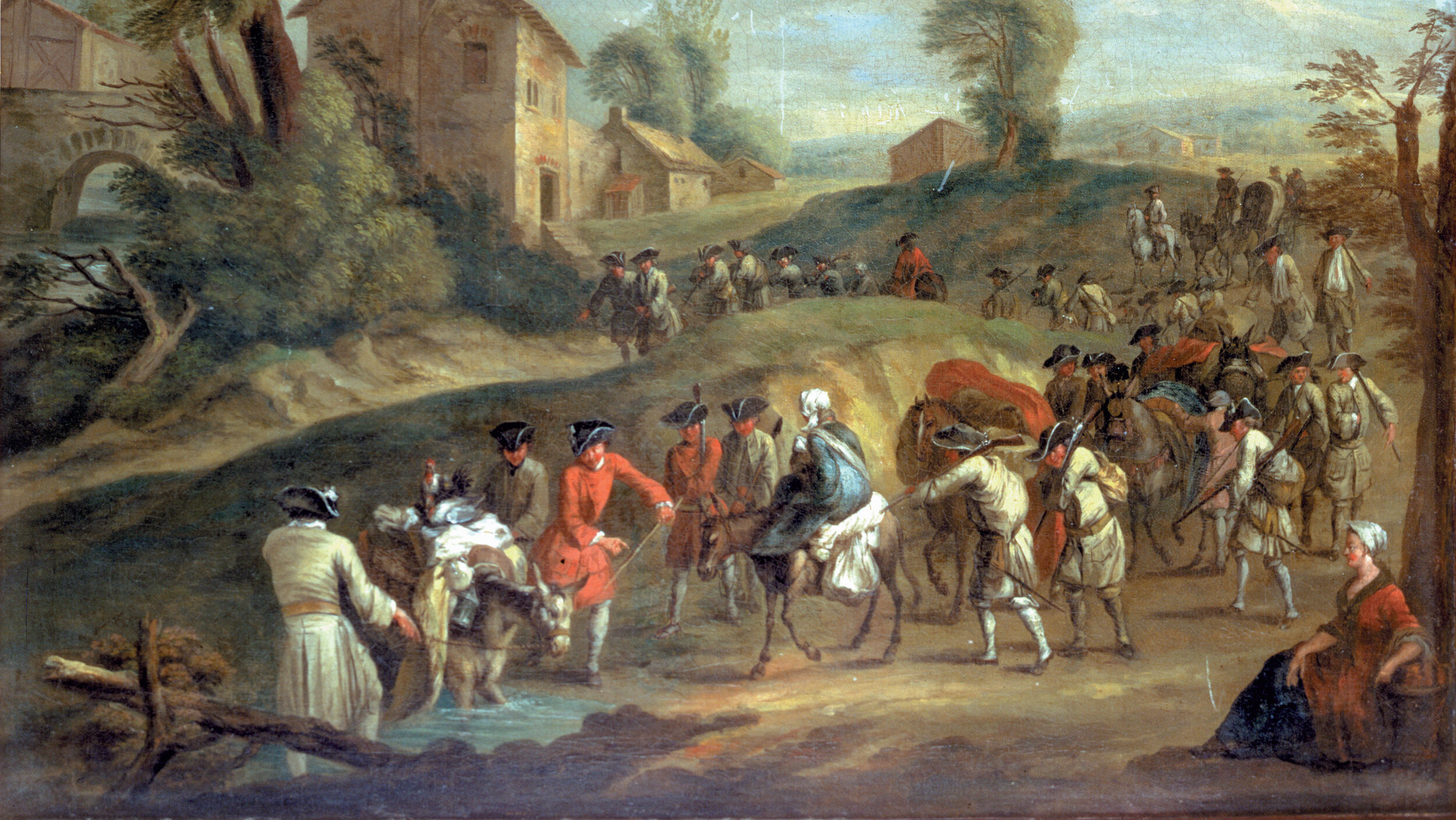
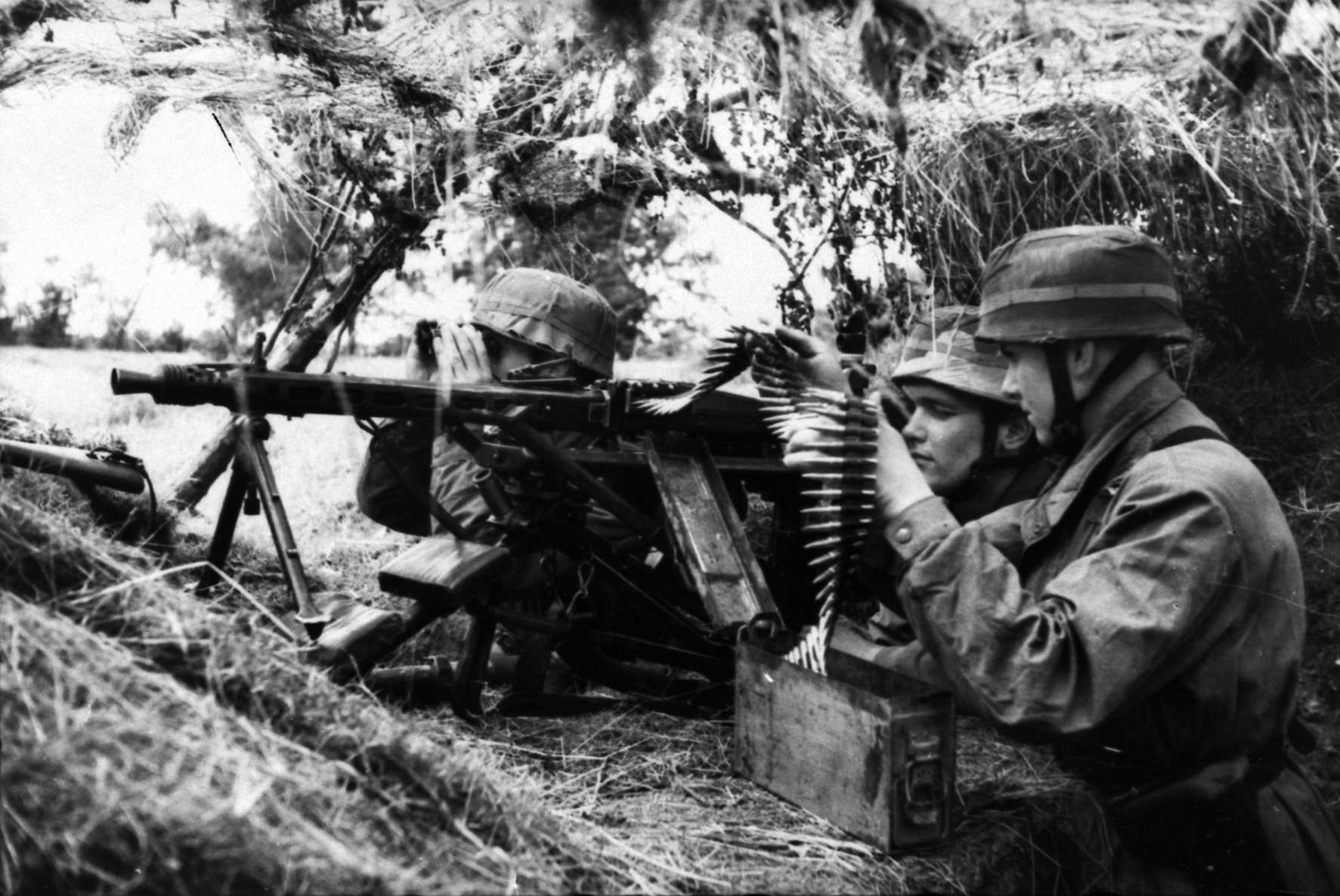
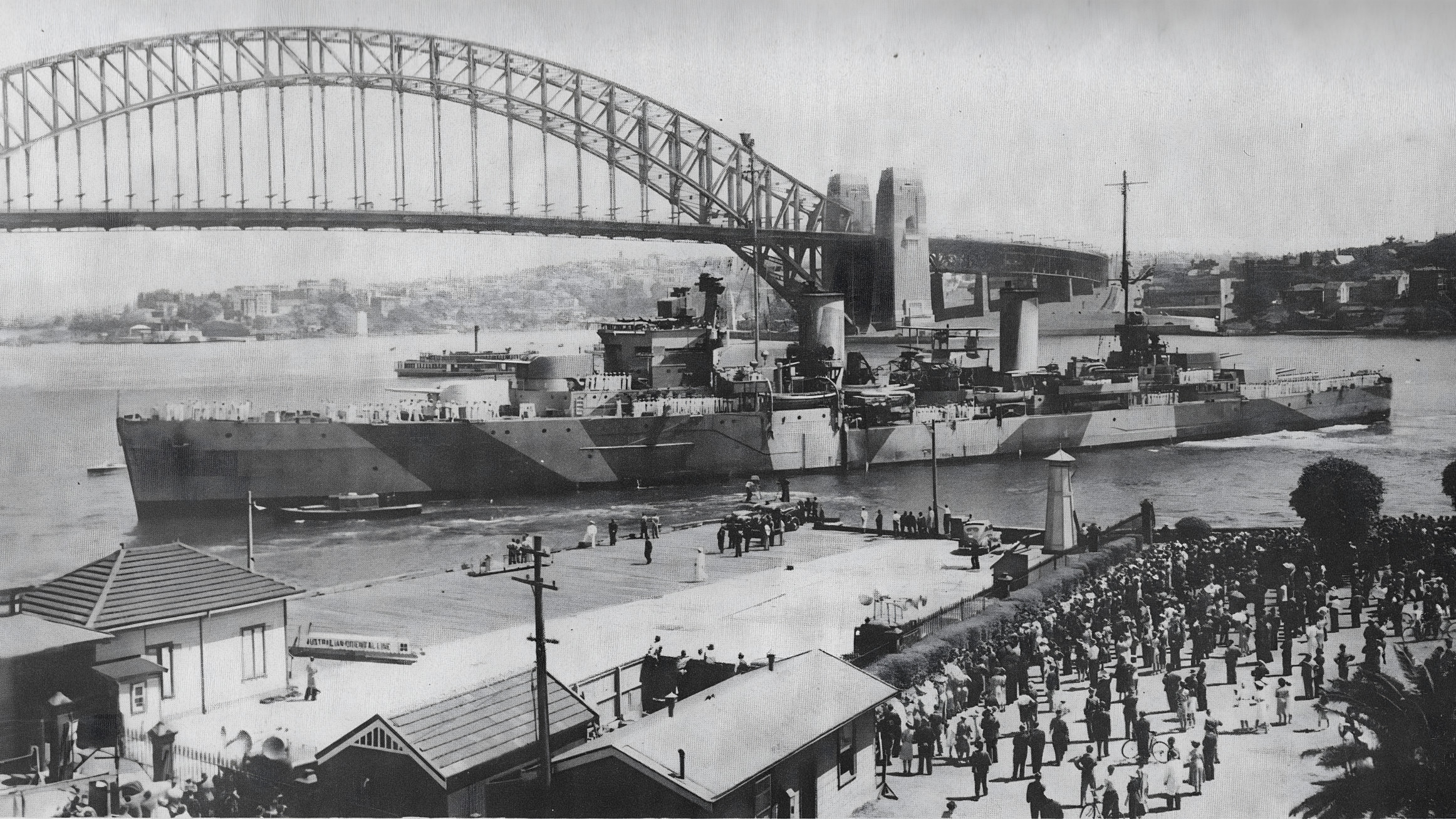
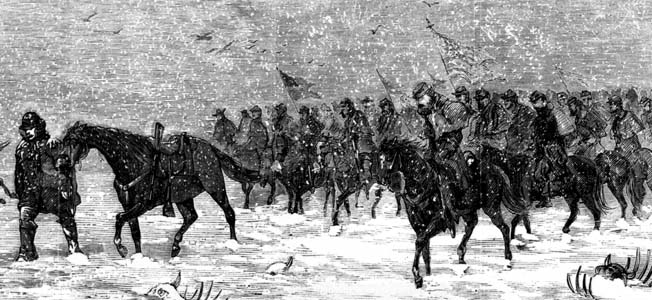
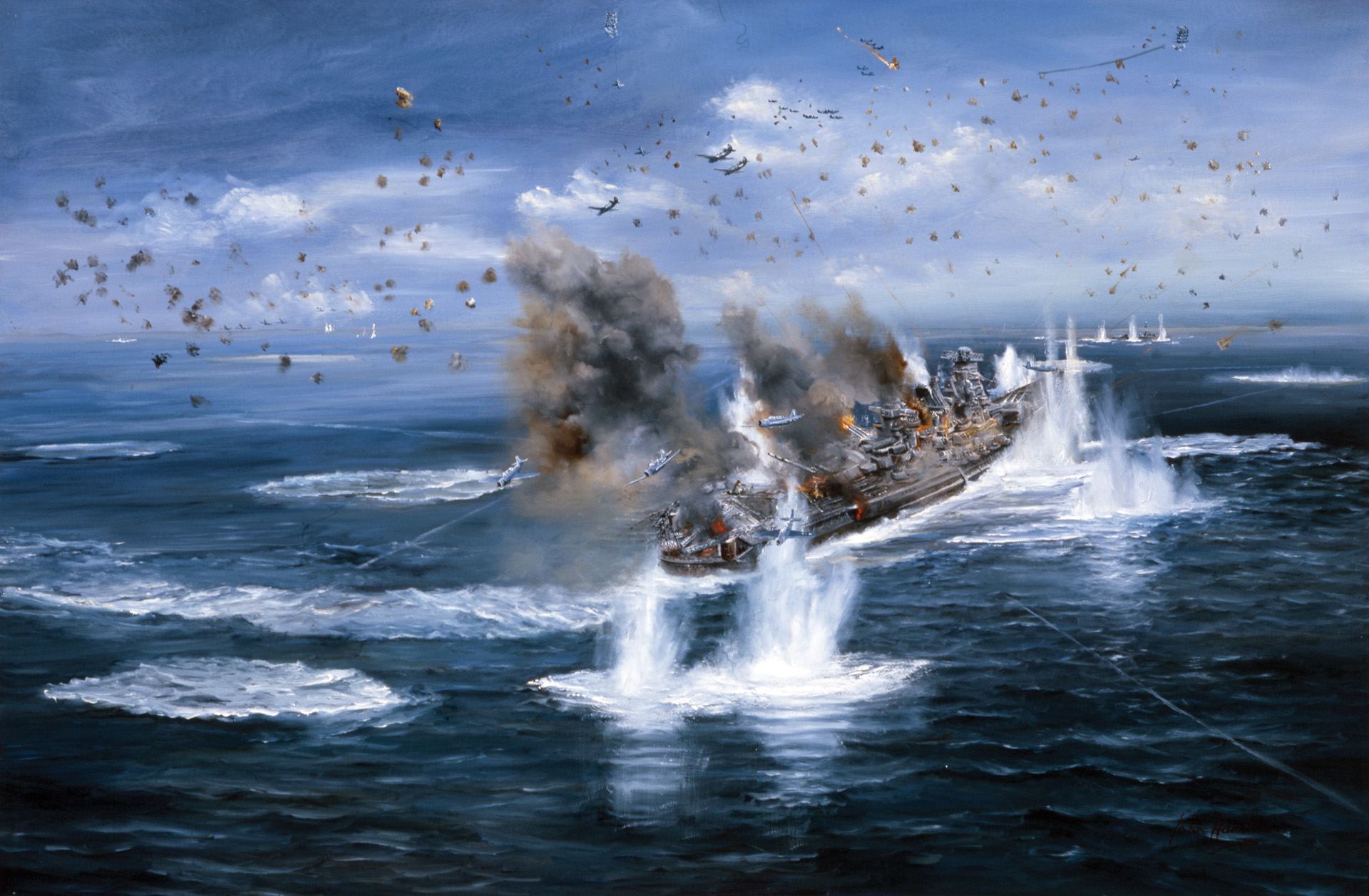
Join The Conversation
Comments
View All Comments